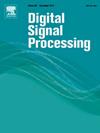通过平均扩散 LMS 和平均似然比检验进行安全分布式估计
IF 2.9
3区 工程技术
Q2 ENGINEERING, ELECTRICAL & ELECTRONIC
引用次数: 0
摘要
安全分布式估算算法旨在通过探索不同的攻击模型和实施增强算法弹性的策略来抵御各种攻击。这些模型包括多种情况,如测量传感器攻击和通信链路攻击,现有文献已对这些情况进行了广泛研究。不过,本文重点关注一种特定类型的攻击:乘法传感器攻击模型。为了应对这种攻击,本文引入了平均扩散最小均方算法(ADLMS)作为可行的解决方案。此外,本文还介绍了平均似然比检验(ALRT)检测器,它提供了一种直接的检测标准。在存在通信链路攻击的情况下,本文考虑了操纵攻击模型,并提出了 ALRT 对手检测器。分析扩展到这些 ALRT 检测器,包括对手检测概率和误报概率的计算,两者都以封闭形式实现。论文还对所提出的 ADLMS 算法进行了平均收敛分析。仿真结果表明,与 DLMS 算法相比,所提出的算法表现出更强的性能,而增量复杂度仍然只略高于 DLMS 算法。本文章由计算机程序翻译,如有差异,请以英文原文为准。
Secure distributed estimation via an average diffusion LMS and average likelihood ratio test
Secure distributed estimation algorithms are designed to protect against a spectrum of attacks by exploring different attack models and implementing strategies to enhance the resilience of the algorithm. These models encompass diverse scenarios such as measurement sensor attacks and communication link attacks, which have been extensively investigated in existing literature. This paper, however, focuses on a specific type of attack: the multiplicative sensor attack model. To counter this, the paper introduces the Average diffusion least mean square (ADLMS) algorithm as a viable solution. Furthermore, the paper introduces the Average Likelihood Ratio Test (ALRT) detector, which provides a straightforward detection criterion. In the presence of communication link attacks, the paper considers the manipulation attack model and presents an ALRT adversary detector. The analysis extends to these ALRT detectors, encompassing the calculation of adversary detection probability and false alarm probability, both achieved in closed form. The paper also provides the mean convergence analysis of the proposed ADLMS algorithm. Simulation results reveal that the proposed algorithms exhibit enhanced performance compared to the DLMS algorithm, while the incremental complexity remains only marginally higher than that of the DLMS algorithm.
求助全文
通过发布文献求助,成功后即可免费获取论文全文。
去求助
来源期刊

Digital Signal Processing
工程技术-工程:电子与电气
CiteScore
5.30
自引率
17.20%
发文量
435
审稿时长
66 days
期刊介绍:
Digital Signal Processing: A Review Journal is one of the oldest and most established journals in the field of signal processing yet it aims to be the most innovative. The Journal invites top quality research articles at the frontiers of research in all aspects of signal processing. Our objective is to provide a platform for the publication of ground-breaking research in signal processing with both academic and industrial appeal.
The journal has a special emphasis on statistical signal processing methodology such as Bayesian signal processing, and encourages articles on emerging applications of signal processing such as:
• big data• machine learning• internet of things• information security• systems biology and computational biology,• financial time series analysis,• autonomous vehicles,• quantum computing,• neuromorphic engineering,• human-computer interaction and intelligent user interfaces,• environmental signal processing,• geophysical signal processing including seismic signal processing,• chemioinformatics and bioinformatics,• audio, visual and performance arts,• disaster management and prevention,• renewable energy,
 求助内容:
求助内容: 应助结果提醒方式:
应助结果提醒方式:


